Way back in 1929, my great grandfather built an unusual boathouse on Lake George. Ever since, the Boathouse has been a touchstone for all his descendants. It is currently owned by his grand-daughter (and my aunt) Julie, and her husband, Ken.
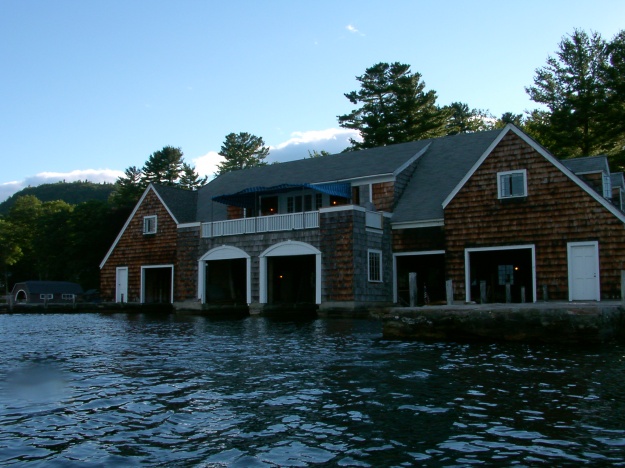
The Boathouse
In 2015, Julie and Ken had the Boathouse inspected. Specifically, they were interested in the condition of the underwater parts of the foundation that are not easily visible from the surface. Not unexpectedly, the inspection indicated that substantial restoration work should be done in an expeditious manner. Since Ken and Julie have little experience working with contractors, and Karen and I have a fair amount, we were invited to act as sounding board, moral support, and comic relief throughout the process, which is still ongoing. This blog will show, primarily in pictures, the remarkable work that is underway.
First, some quick background on how the Boathouse is built. Starting from the top and moving down: the Boathouse is built around over a dozen 12×12 inch vertical timbers. These timbers in turn sit on steel plates that sit on large concrete blocks. In turn, the blocks (and we are under water now) sit on cribs, which can best be visualized as log cabins filled with stones (you’ll understand when you see the pictures a bit further down). Finally, these cribs sit on the bottom of the lake. The entire structure is built over the lake; it touches land, but does not sit on the land in any way.
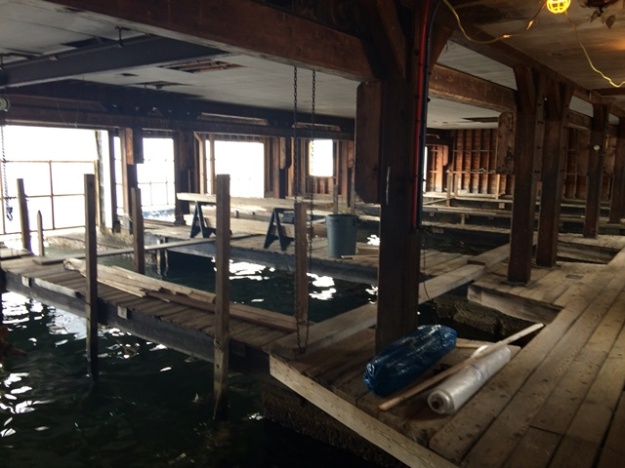
The closest I have to a “before” picture. The columns you see are the 12×12 timbers
The execution of this design back in the 1920’s was nearly flawless; almost 90 years later, the Boathouse is still within one inch of being perfectly level. In contrast, my house in San Jose was out of level by far more than that within three years of being completed! But after many years of a very harsh environment, some materials have simply reached the end of their expected life.
The process to repair the boathouse can be described with ease, but accomplished only with difficulty. The process is as follows:
- Lift the Boathouse just a little bit, essentially putting her on “stilts”
- Demolish and remove the old concrete
- Reinforce the cribs
- Pour new concrete
- Gently put her back down
Of course, things are complicated a bit by the fact that most of this work must be done below the surface of the lake. And in the harsh Adirondack winter!
So, now that you have the general idea, let me show you some of the details, in full technicolor…
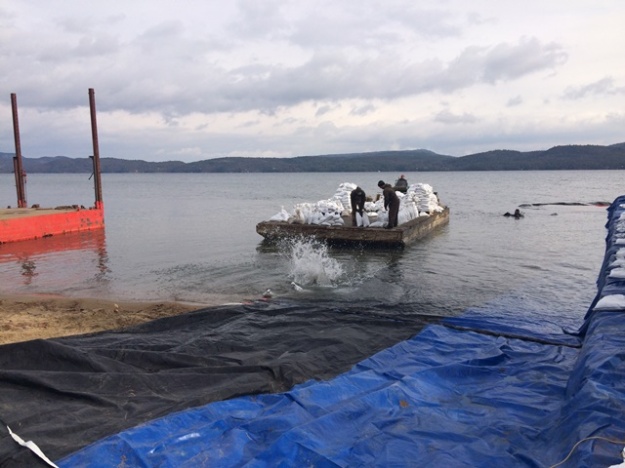
The first step was to get the water out of the Boathouse. This was done using a “coffer dam”. For reasons known only by the contractor, they started work in mid-December
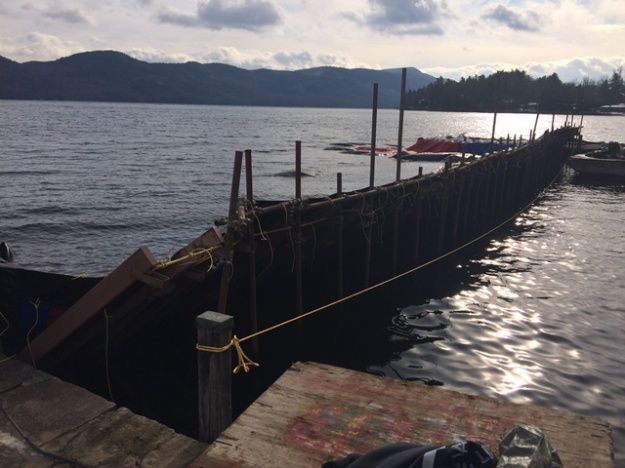
The coffer dam is basically a steel frame covered with a large, thick plastic tarp

The tarp extends along the bottom of the lake for 25 feet, and is held down with sand bags
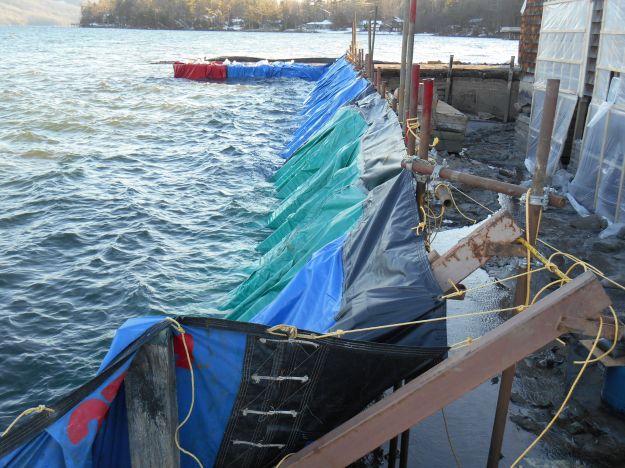
Once the coffer dam is in place, it forms an impermeable barrier, and the water is pumped out. Amazingly, it works!
OK, now that the water is gone, lets see what this foundation looks like!
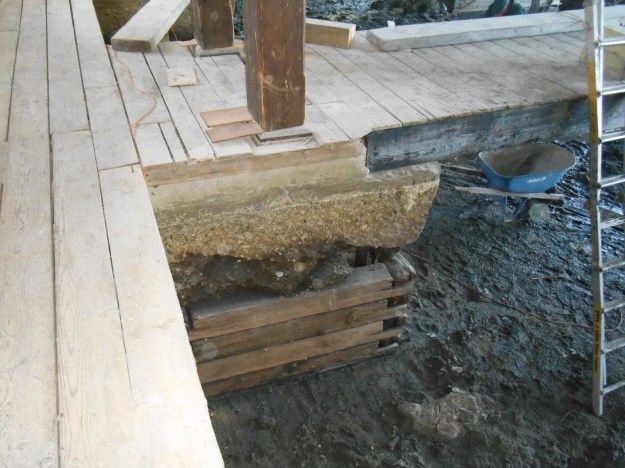
Here’s a pretty good example. As you can see, the crib sits on the bottom of the lake, and the concrete (which clearly has seen better days) sits on the crib. And finally, the timber sits on top of the whole thing
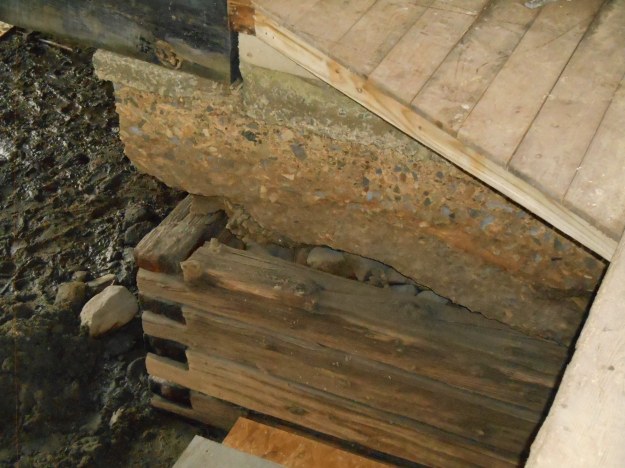
I was curious why the wood does not rot. As it turns out, wood does not rot under water, because there is no oxygen. That is the same reason why Spanish galleons are found on the bottom of the sea, several hundred years after they sank.
You might be wondering how they manage to lift the Boathouse…

Smaller beams are attached to the large 12×12, and supported on the bottom of the lake

Small but powerful jacks are places at the bottom of each auxiliary beam to do the lifting
Now that the Boathouse has been lifted, it is time to remove the old concrete.
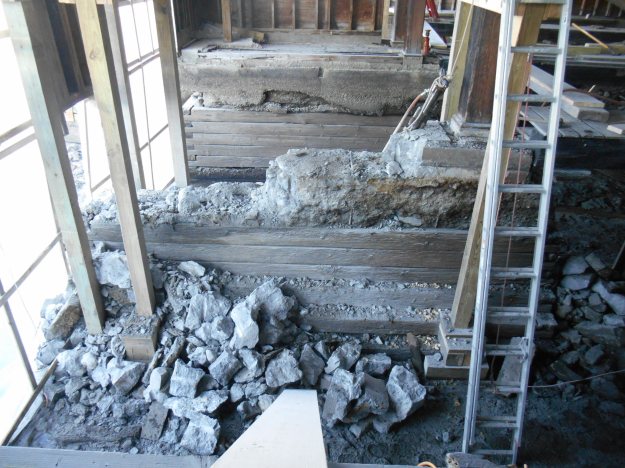
Demolition in progress
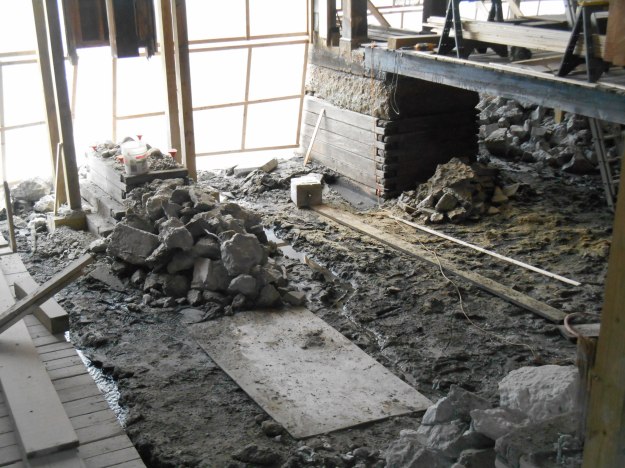
Demolished concrete pier, with timber suspended by the auxiliary supports
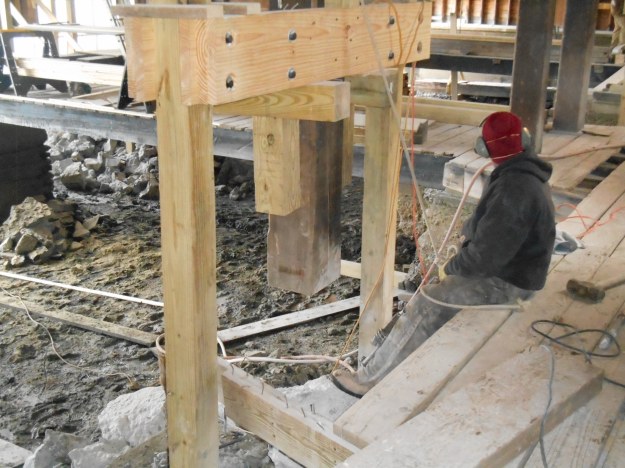
Pier’s gone, time to take a well deserved break
The Department of Environmental Conservation would not allow ANY concrete debris to be left in the lake – even though it had been in the lake for 85+ years. So, we had to figure out how to get it off the lake bottom, out of the Boathouse, and into trucks for disposal.
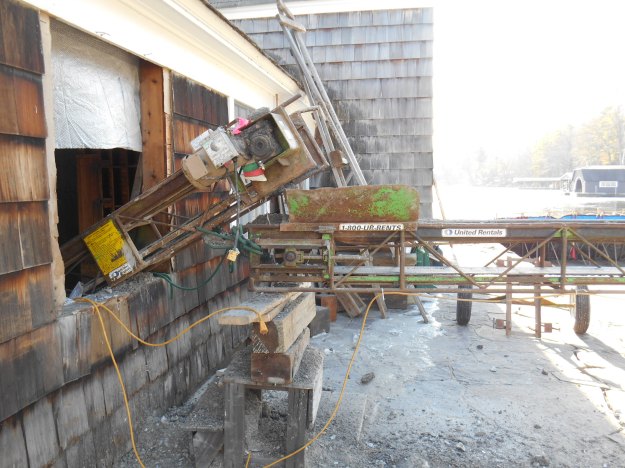
Conveyor from the work area, through a window, and outside
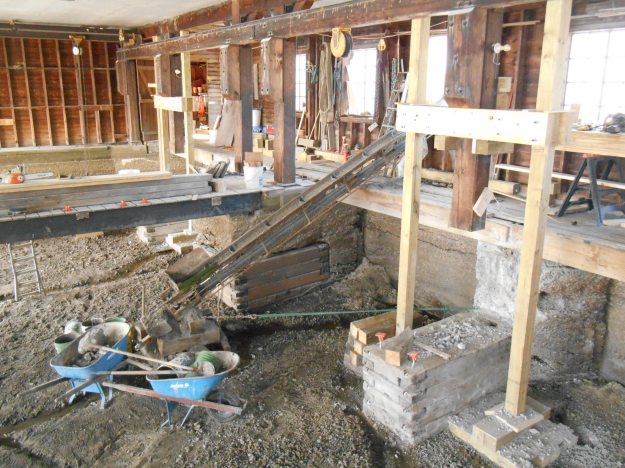
The start of the conveyor, inside the Boathouse
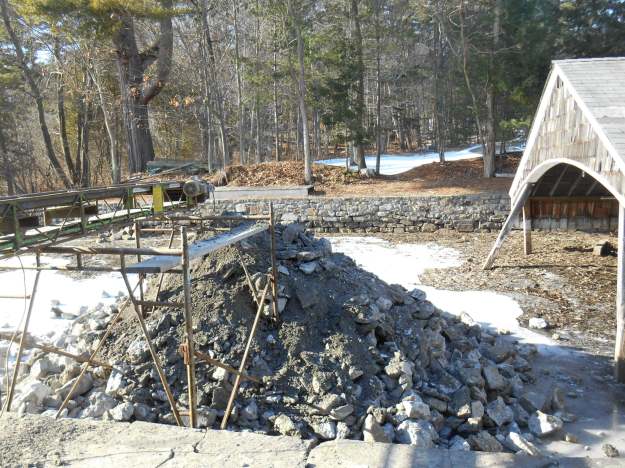
The rubble is piled in the emptied lagoon, for removal at the end of the job

Lots of old concrete. Unfortunately, the canoe boathouse will need to be removed so that the concrete can be loaded into trucks
Once the old concrete was demolished and removed, it was time to strengthen the cribs. The cribs are held together by steel pins, which have largely corroded and weakened. They were reinforced substantially with some serious lag bolts.
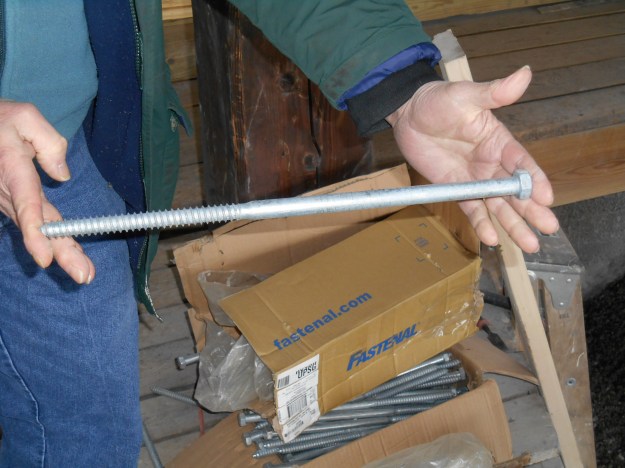
Now THAT’s a serious lag bolt!
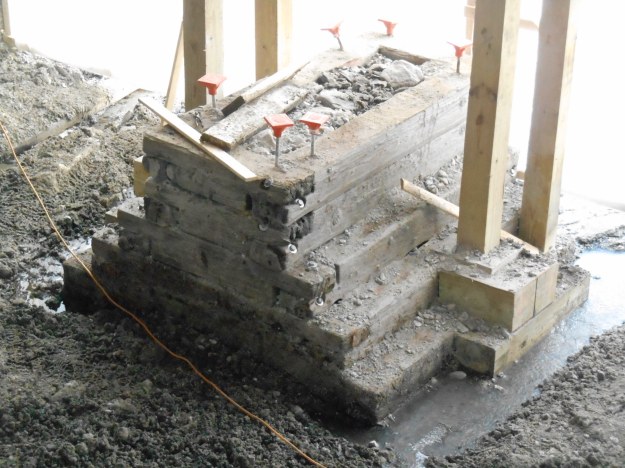
One problem with cribs is that the corners can separate, allowing the crib to collapse. Bolts in the corners will prevent this from happening

Lag bolts visible on the corner of this exterior crib
Now that the cribs are solid, it is time to replace the concrete piers. Concrete technology has come quite a ways since 1929; this time steel reinforcement will be used.
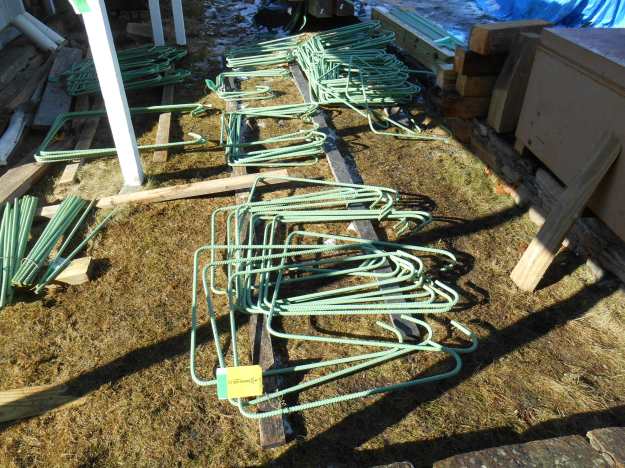
Rebar laid out and ready for placement in the forms
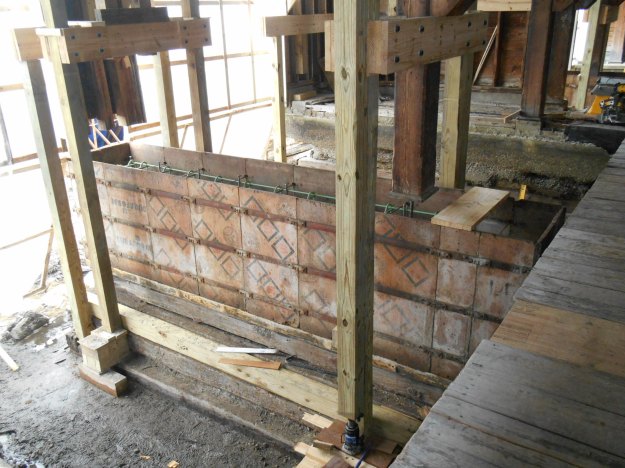
Plywood forms under a couple of the suspended timbers
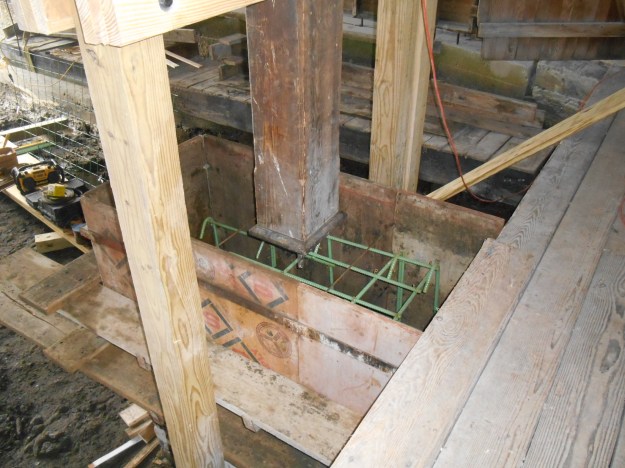
Looks about ready for some fresh concrete!
It was tough to get the old concrete out, and it certainly was not easy to get the fresh concrete inside. I wish I could have been there to watch this!

Pumper truck getting ready for action
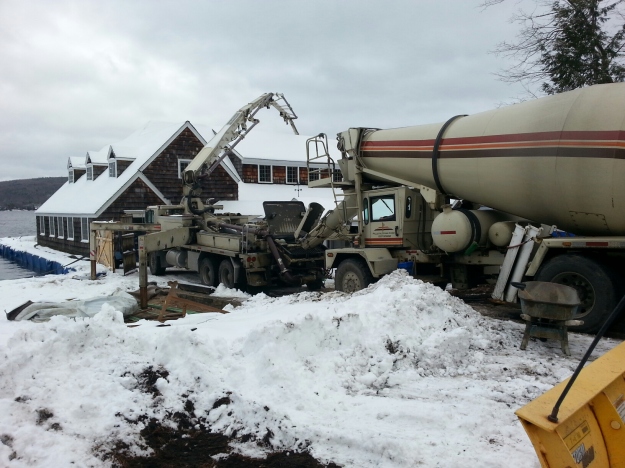
The best way to get the concrete in turned out to be to go over the boathouse and in from the lake side
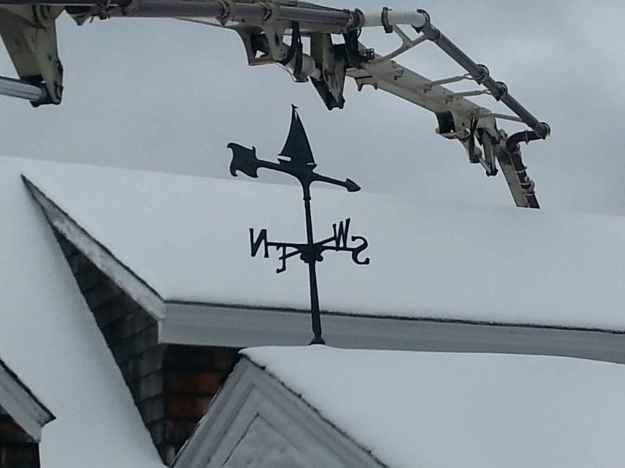
Up and over!
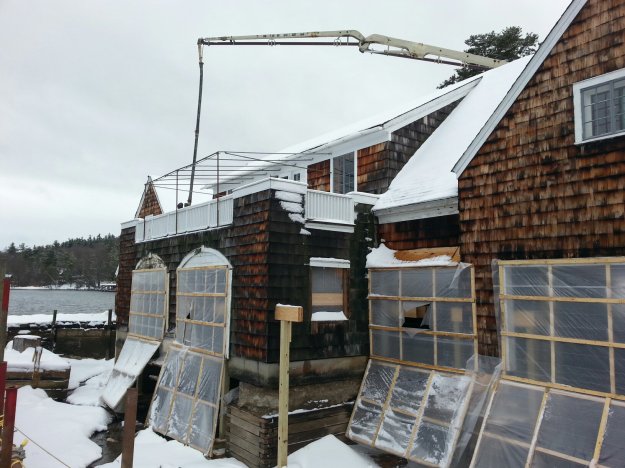
The view from the lake
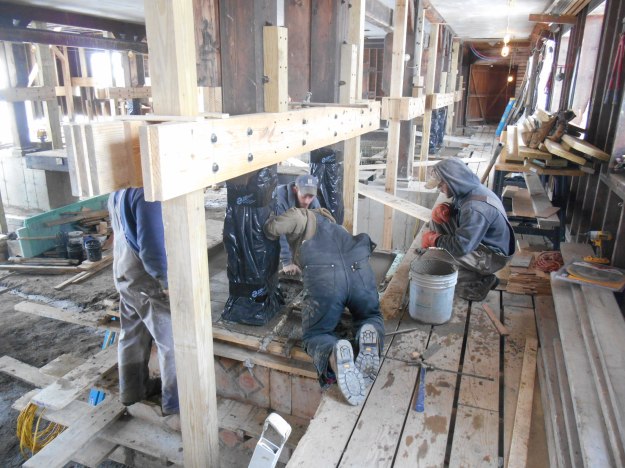
Masons working on a new pier
For anyone who loves this Boathouse, it is truly a beautiful sight to see the lovely, smooth concrete on which she now rests.
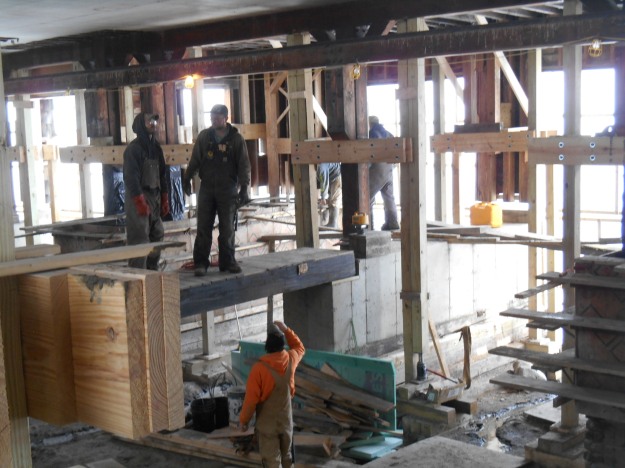
Completed pier to the right of the workers
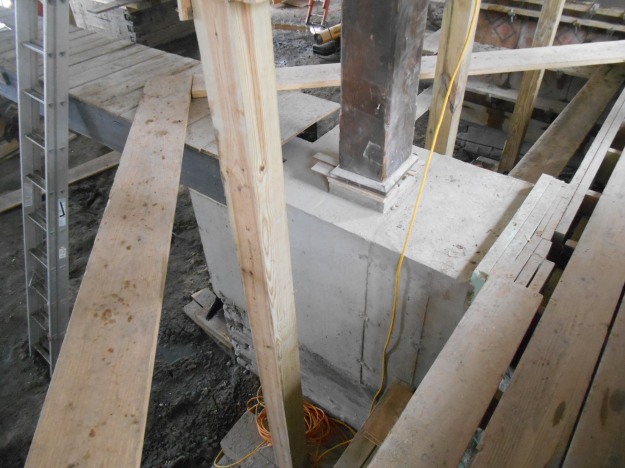
Completed pier. If you look closely, you can see that the timber is still suspended about an inch above the concrete

The same pier, prior to restoration
And that’s about where she stands at the moment. Since these photos were taken, she was gently let back down onto the piers. There is plenty of work yet to do, but the end is in sight. The walkways need to be reconstructed, the rubble needs to be removed, the water needs to be pumped back in, and the coffer dam needs to be removed. But the heavy lifting, so to speak, is complete!
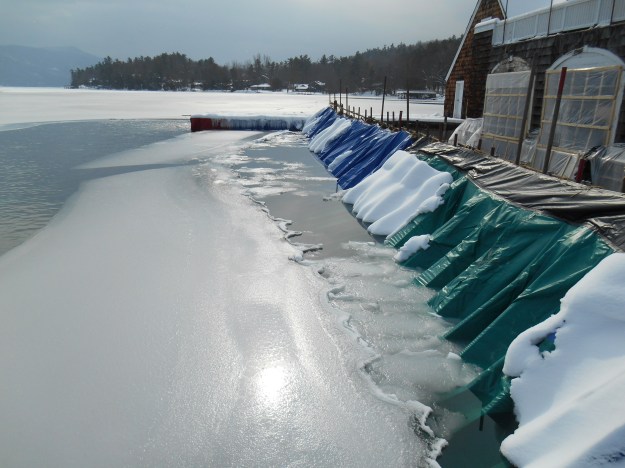

Fantastic! This is a great way to document it all. What a project this is.
Wow, Johnny. Amazing. So glad you documented this (and of course helped it happen!)
The Boathouse. My one favorite spot on planet Earth. The only spot I feel connected to place, to family far and near, living and departed, and to all my favorite memories. I don’t have the words to express the joy this work brings me. To John and Karen, Julie and Ken, to everyone who has helped make this happen: Thanks is much too small a word, but nevertheless, thanks for preserving this treasure for future generations!
Thanks for sending the blog. I thought the two most amazing sights were: 1) the coffer dam–it was not the way I had pictured it in my imagination, and 2) the concrete being sent over the top of the boathouse to enter from the lake side. The combination of the amazing photos and your descriptions of them made for fascinating viewing. Thanks again!!
Thanks for giving me the “key” to this blog. I was sorry to have missed seeing the job in person, but your documentary makes up for that. Hope you enjoy the boathouse and Lake George for many years.